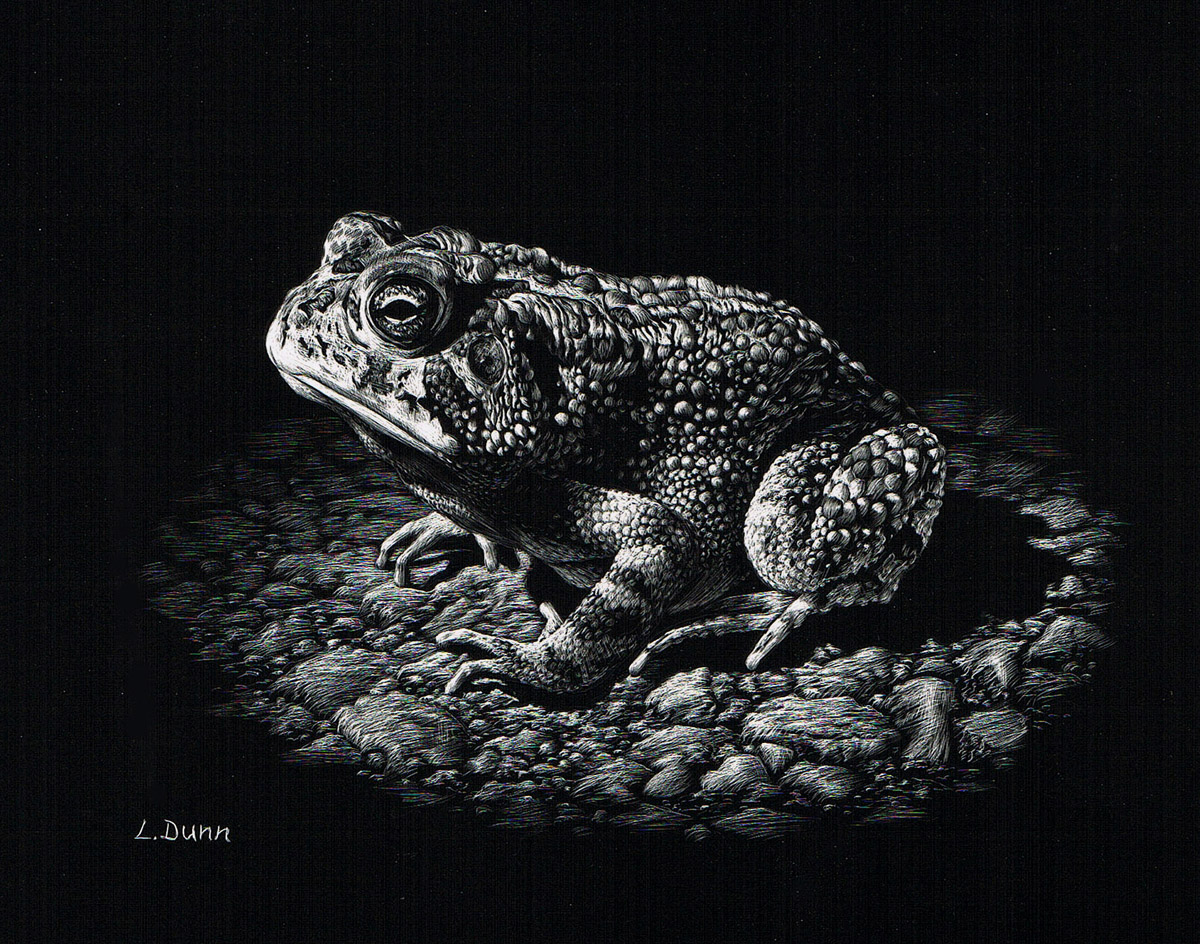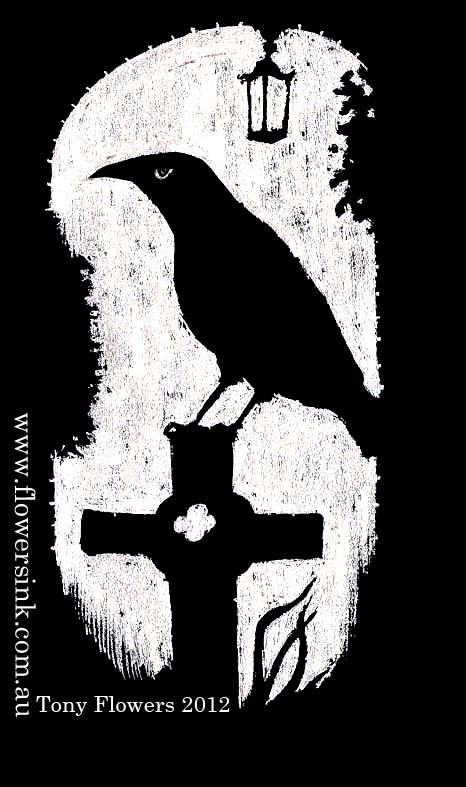A few people have asked me if I could suggest a list of supplies for getting started with scratchboard. I think I will post the information here.
- 3-pack of 5×7 Ampersand Scratchbord
These are less than $8 at http://www.jerrysartarama.com. These boards are inexpensive, with a really nice surface. The size is small enough that it won’t take forever to finish.
- 1 package of Super Chacopaper
This is the best transfer paper I’ve used. The lines go down just right – not too heavy, not too light. And, extra lines can be removed with a small, damp paintbrush. Michael’s usually has Chacopaper for about $7 – less if you use their 40% off coupon.
- 1 X-acto knife with a #11 blade and a #16 blade
You will want to have more than one blade per size. How often you change them out depends on how you work. I tend to buy boxes of 100, although they come in packages of 5. I suggest the two different blades to get used to the marks they make. Both blades are fairly easy to find. I haven’t priced knives or blades for a while, but they aren’t terribly expensive.
- 1 cheap ball point pen
I use a very basic blue Papermate medium point for making transfers.
- Masking tape
I use the tape to attach my drawing to the top edge of the board, like a hinge. This keeps the drawing from shifting while I’m doing my transfer, and it allows me to lay the drawing back down in the same position if I need to transfer more lines. I use either white artists’ masking tape, or green 3M masking tape because they are easy to remove when I’m done.
- Faber Castell Pitt Pen
Mistakes happen, and the brush pen and size S are very useful for making corrections. They are also useful for crosshatching dark lines over light lines to create textures. I’ve used other pigment pens with good results, but the Pitt pens seem to make the color of the Ampersand ink and they don’t leave very shiny lines. I pat the corrected area with my finger to take the shine off. The last time I priced these pens they were a few dollars apiece
This would give you enough to get started. At least one of the boards would be for playing around with different scratch patterns and getting used to the surface of the board. The patterns you make really depend on your own personality and what you want to do. If you are looking for highly realistic work, you would probably end up using the #11 blade and working with finer lines to hold the details. If you want to do more illustrative work, the #16 makes bolder strokes easily. I generally start with the brightest areas first and work into the dark.
I remember being nervous to try scratchboard the first time. I think my best advice would be to forge ahead and just plan on ruining the first one while you figure out how it works. The 5×7 boards aren’t expensive so it’s not a big loss if you have to start over.















